Otago Weekly Fishing Report - 1 February 2024
- Otago
- 1/02/2024
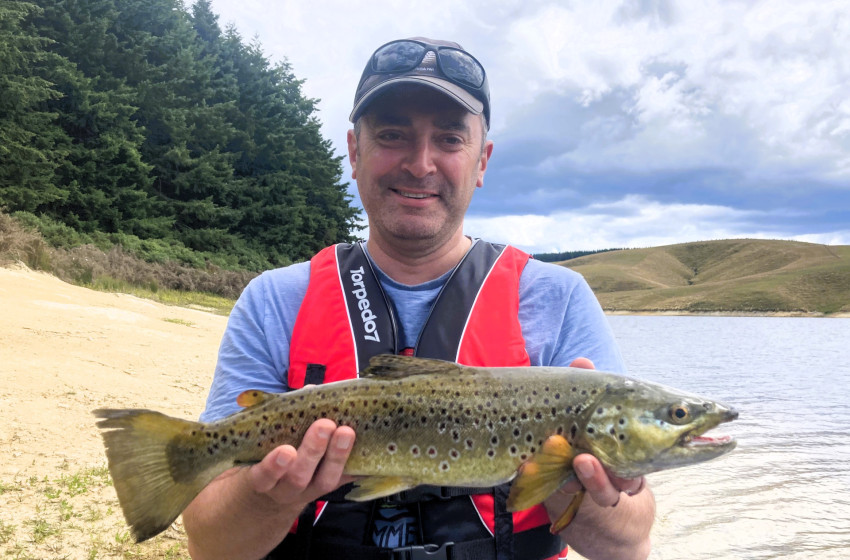
Pictured above: Stefan Thorburn with a Mahinerangi brown, which was heading home for the smoker. Credit: Bruce Quirey.
Toby takes the prize
A long time coming, this brown trout was finally the reward for Stefan Thorburn after a day’s spin fishing at Lake Mahinerangi at the weekend.
The trout took a large black-and-silver Toby lure cast towards the shoreline and retrieved from a boat.
Although the trout bite was a bit slow, about 16 perch were caught, the largest weighing 1.5kg and 43cm in length. They readily took soft baits and a Toby. Perch can be caught relatively easily and are fun if you’re looking to keep kids entertained.
This lake often fishes well when trolling and if our lead line hadn’t turned into an unsightly birds nest early on then results might have been better.
Worth noting for fly anglers were clouds of caddis flies in the morning – suggesting a good night-time hatch - and damselfly nymphs cutting through weedy shallows.
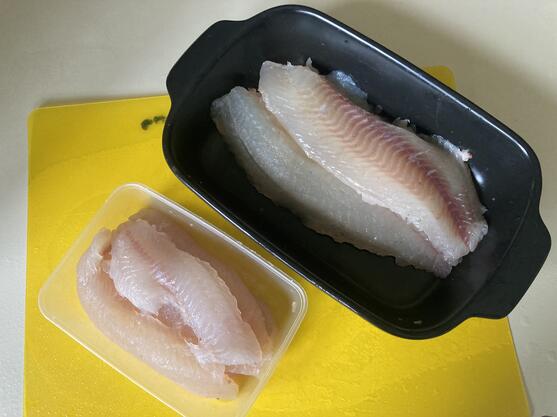
Firm, white perch fillets present all sorts of fresh culinary possibilities. Credit: Bruce Quirey.
Several Mahinerangi perch were quickly dispatched and went straight into an iced chilly bin for filleting at home. Some have already been turned into a delicious butter perch dish (see recipe in January 18 report) and others will be crumbed and fried.
Before heading to Mahinerangi, check the forecast as the lake is susceptible to strong winds.
Cicadas on the menu

Stomach contents from a large brown trout, showing many cicadas as well as a few grasshoppers and one green beetle. Photo: Mason Court
The chirruping of cicadas was echoing around the high country this week, exciting anglers as these often large fish indulge themselves on an influx of food blown onto the water. One brown trout harvested from the back country had more than 50 cicadas in its stomach, showing how heavily they favour this food source.
Anglers should ensure their fly is the correct size and colour match for the cicada in the area they are fishing. Many of the cicada found in the high country are tussock cicada Kikihia angusta, which are smaller than the other species commonly found around town.
Where legal to do so, spin anglers can also target these fish using a small bubble float paired with a cicada fly. This method is particularly effective at large high country high country reservoirs. Slightly filling the bubble float with water helps with casting.
You can check the sportfishing 2023/24 regulation online here.
Upper Clutha/Mata-au access

An example of a Clutha Fisheries Trust angler access marker found around the upper Clutha/Mata-au catchment. Credit: Mason Court.
Ever wondered what the little blue signs scattered along Lake Dunstan and the upper Clutha/Mata-au are? They are the marker used by the Clutha Fisheries Trust to show angler access points.
The Clutha Fisheries Trust (formed in 1992) in conjunction with Otago Fish & Game established a lot of the existing access in the Clutha/Mata-au River catchment and Lake Dunstan. The trust is supportive and committed to maintaining access throughout the catchment and it will continue to be a priority of the trust’s work.
For the new Fish & Game digital access map, which includes the Clutha Fisheries Trust access points, click here.
Trout care
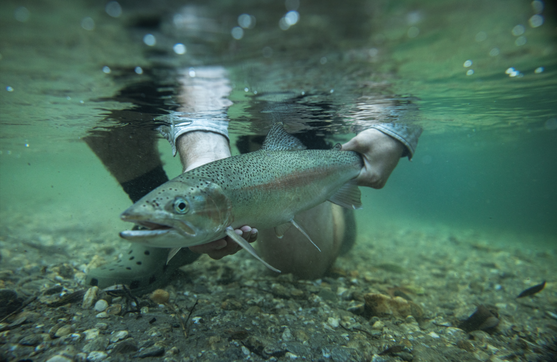
An angler gently holds a rainbow trout facing upstream, allowing it to recover before releasing it. Credit: Allan Carpenter.
Rangers conducting compliance checks on one of Otago’s Designated Waters this week found a large brown trout dead at the bottom of a pool.
After a ranger took a quick swim to recover it, the fish was examined. It showed signs of having been recently caught and had a fresh wound on its upper jaw. The otoliths (ear bones) were removed, and fish weight and length also recorded (7.7lb and 633mm). Even in death, this fish may be able to offer some information regarding growth rates.
It is another opportunity to remind anglers on how best to handle large trout, to ensure they have the best chance of survival after capture.
- Land your fish quickly. Use the heaviest line you can get away with. An exhausted fish has much less chance of surviving.
- Use a net to land your fish. Keep the trout in the net and in the water. Gently unhook it using long-nosed pliers.
- If possible, avoid touching the fish with your hands. If you must touch it, then wet your hands first.
- If you want a photo, make it quick and get the fish back into the water quickly. Ideally, take the photo of the fish still in the water.
- If you must hold the fish, do it gently with one hand around the tail and the other carefully cradling the fish.
- Hold the fish over water so if you drop it, it lands in the water, not on rocks.
- When returning the fish to the water, cradle it facing upstream to allow oxygenated water to past through its gills.
- If caught in warm shallows, consider moving to shaded or slightly deeper water.
- Once the fish is recovered enough to kick off by itself, gently release the fish allowing it to swim away on its own.
Focus on the fast
Willow grubbing trout can be frustrating at the best of times, often refusing a perfectly presented willow grub pattern multiple times. One angler who recently had success is Dylan from Queenstown Hunting & Fishing.
Presentation is as important as fly choice when chasing willow grubbing fish, as often you have to land the fly only centimetres from the fish’s nose to get a take.
Dylan spent less time on fish sitting in the slower pools, and instead focused on fast-moving riffles and runs where trout had less time to analyse the flies, resulting in more takes.
Dylan often trails a willow grub pattern behind a small but highly visible dry fly to ensure he did not miss the subtle takes these fish are famous for.
If having no luck with a willow grub pattern, trying a completely different fly, such as a cicada or blowfly imitation, can often work.
Takitakitoa Wetland Walking Tour
Join Fish & Game staff for a walking tour at Takitakitoa Wetland to mark World Wetlands Day.
The event starts at 6pm tomorrow, February 2. Takitakitoa is one of the largest wetland restoration projects in the country. This is a chance to explore the flora and fauna which have recolonised the area, learn more about this wetland and do some planting. The wetland is at the end of Takitakitoa Rd, about 40 minutes’ drive south of Dunedin, on the lower Taieri. Click here for more details, including directions how to get there.
Clyde Dam live webcam

A screengrab of the Clyde Dam webcam taken at the time of writing.
Want to know conditions at Clyde Dam? Check this live webcam sponsored by Contact Energy updated every 15 minutes.
Lake Wānaka live webcam
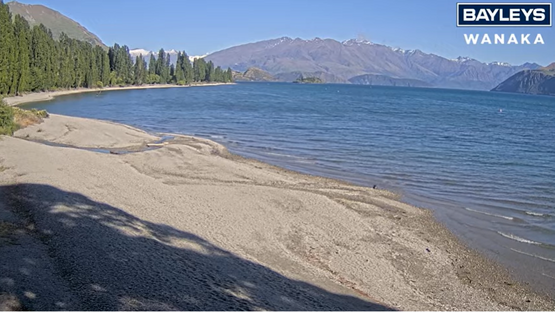
A screengrab of the Lake Wānaka webcam taken at the time of writing.
Want to know conditions at Lake Wānaka? Check this live webcam from the Wānaka water sports facility.
Here’s the weekend outlook:
Dunedin

Rain is forecast to fall across Dunedin starting on Friday morning before clearing late Saturday evening. Sunday is forecast to be overcast with moderate westerlies. A stunning day is forecast for Monday with light north-westerlies and clear skies, paired with a high of 28 degrees ̶ ideal fishing conditions. The weather deteriorates on Tuesday (Waitangi Day) with heavy rain and brisk south-easterlies forecast.
The Taieri River at Outram is flowing at 2.7 cumecs, and the water temperature was 18.9 degrees. Expect the Taieri to cool and rise with the forecast rain of the long weekend.
Click here for live weather updates.
Wānaka
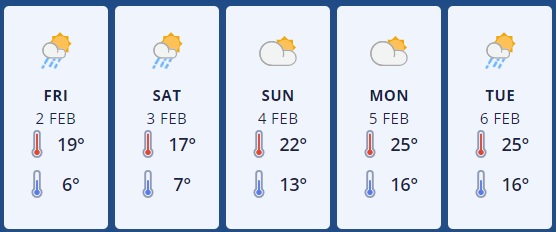
A variable forecast for Wānaka over the long weekend with showers, some heavy, forecast for Friday before easing slightly on Saturday afternoon. Sunday and Monday are the best days for angling with limited wind and overcast conditions ̶ perfect for trolling the lakes or spinning from the shore. Rain is forecast to fall on Tuesday (Waitangi Day) with brisk north-westerlies expected to develop.
Click here for live weather updates.
Alexandra
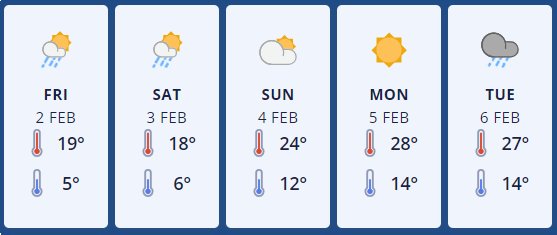
Rain is forecast to fall in Alexandra on Friday and Saturday before clearing on Sunday morning. Monday is forecast to be a clear, warm day with light north-westerlies. Waitangi Day has strong northerlies and heavy rain forecast.
Click here for live weather updates.
Clutha Regional Forecast
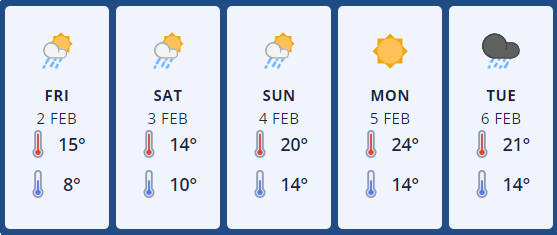
Cool air temperatures and rain are forecast on Friday and Saturday for the lower Clutha. This will likely cool and refresh many rivers, including small tributaries. Monday is forecast to be a stunning day, with clear skies, little to no wind and warm air temperatures. Waitangi Day is forecast for showers to develop, possibly heavy, with brisk south-easterlies.
The Pomahaka River was flowing at 5.8 cumecs at the time of writing. Expect it to fluctuate with the forecasted rain.
The lower Clutha River at Balclutha is flowing at 830 cumecs and is still significantly coloured from the Clyde Dam through to the mouth.
Click here for live weather updates.
Getting started
Need a fishing licence? Go online here, and let the angling adventures begin.
Got any Otago fishing news?
Send your fishing news and photos (with anglers’ names) to otago@fishandgame.org.nz for consideration in the weekly report.